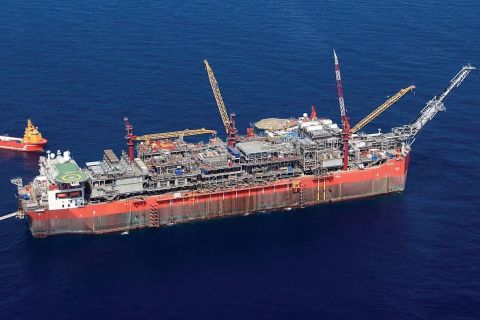
(Image provided by Weatherford International Plc)
[Editor’s note: Opinions expressed by the author are their own.]
Like most of the world, I’m working from home … in fact writing this article from my home study. I just finished an online meeting with my colleagues, while setting up an online learning session for my daughter on her iPad. It makes me wonder what we could’ve done without technology in these times.
I work in one of the world’s most challenging and innovative industries, upstream oil and gas. We strive to produce hydrocarbons in a safe and effective manner to deliver oil and gas, which essentially forms the base for modern-day life, including gasoline, plastics, and my daughter’s iPad.
Producing hydrocarbons has led to a tremendous amount of technical innovation due to the environments in which we work. A typical well today is more than two miles deep, has crushing pressures, and is almost always located in remote and desolate parts of the world. That said, we can hit an underground target we can’t see within a few feet. We take pride in our innovation, and it’s been completely homegrown.
That can-do attitude has paradoxically created hurdles in adopting technologies from outside the energy sector. As a historical rule, we simply have never collaborated with anyone to adopt new technologies. The new wave of digitalization and Industry 4.0 has changed that attitude completely. We’ve realized that, in order to advance the safety and efficiency of our industry, we have to look outside of our own.
Current events have brought true urgency in adopting digitalization. The first is COVID-19, which has made us quickly rethink how we can and should run our operations. The second was the 65% crash in oil prices, which has deeply affected our capex and opex spending.
Reduce Costs Right Now
It’s hard to overstate the impact of the oil price crash. Every person and every company on every inhabited continent are now working to find ways to drastically cut costs. Imagine that Tesla just found out that they have to deliver the car they sold for $50,000, but now it needs to be $20,000 with no changes to the product, and they have only the amount of time that cash on hand allows. This is a generational event for the oil field.
The upstream industry, from producers to service companies to third-tier suppliers must cut opex and capex now. Apart from finding and cutting operation efficiency problems—most have been weeded out over the past several years of lower oil prices—the only viable solution left is digitalization. This means that it’s time for the oil field to embrace IoT, Cloud and analytics in a big way, and fast.
The single silver lining in this is that the technology exists. We, as an industry, need simply to harness it. Many companies, including mine, have partnered with the likes of Microsoft, Amazon and Google to embrace digitalization and find a better way to safely produce more at a lower cost … which also has the added benefit of reducing operational carbon footprint.
Some Industry 4.0 applications are now live in the oil field, including a forward-thinking producer in Texas. By embracing Industry 4.0 concepts, the company expects an annualized savings of $17.7 million per year from here on out. These are the changes that we need on a much wider scale.
Manage Businesses Remotely
COVID-19 has made it crystal clear that we must reduce workforce presence at operational sites and in our business offices. Other industrial sectors have already leveraged remote decision making, monitoring, analysis, collaboration, and equipment control. For the oil field, remote operations can be applied across the exploration, drilling and production phases.
COVID-19 has proven how readily we can adapt to remote decision making and collaboration while sequestered at home. The next step is operating theater, in which we have massive equipment spread across the world.
Today, nearly all wells operate on artificial lift, which essentially pulls hydrocarbons out of the reservoir when natural pressure can’t do it alone. Most of them are controlled automatically using traditional controllers that behave like conventional thermostats at home. Cloud technology enables remote monitoring, analysis and decision making to change how the equipment operates without visiting the site.
Taking it one step further, we can implement autonomous control change our thermostat from conventional to self-learning, like a Nest system. In essence, the artificial-lift machinery learns how best to run itself, to get the most of the well efficiently, and it can call for help when needed. This will be a huge step in reducing boots on the ground and greatly enhance safety.
Permanent Changes
Macro factors are pushing the upstream oil and gas industry to change now. By merging innovations from tech giants with oilfield technology, we can create a sustainable future for our businesses. Collaboration is no longer a second thought, it’s a necessity.
About the Author:
Manoj Nimbalkar is the global vice president of production automation and software at Weatherford. He leads the team that is applying IoT, Cloud, Edge computing and advanced data analytics technologies to improve upstream production. He holds a BEng in chemical engineering from the University of Mumbai and an MBA in marketing and strategy from the Kelley School of Business at Indiana University.
Recommended Reading
TotalEnergies Starts Production at Akpo West Offshore Nigeria
2024-02-07 - Subsea tieback expected to add 14,000 bbl/d of condensate by mid-year, and up to 4 MMcm/d of gas by 2028.
Well Logging Could Get a Makeover
2024-02-27 - Aramco’s KASHF robot, expected to deploy in 2025, will be able to operate in both vertical and horizontal segments of wellbores.
Shell Brings Deepwater Rydberg Subsea Tieback Onstream
2024-02-23 - The two-well Gulf of Mexico development will send 16,000 boe/d at peak rates to the Appomattox production semisubmersible.
E&P Highlights: Feb. 26, 2024
2024-02-26 - Here’s a roundup of the latest E&P headlines, including interest in some projects changing hands and new contract awards.
Remotely Controlled Well Completion Carried Out at SNEPCo’s Bonga Field
2024-02-27 - Optime Subsea, which supplied the operation’s remotely operated controls system, says its technology reduces equipment from transportation lists and reduces operation time.





